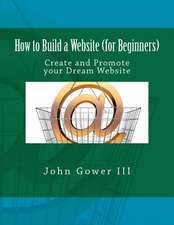Ospf: Anatomy of an Internet Routing Protocol
Autor John T. Moyen Limba Engleză Paperback – feb 1998
Written for TCP/IP network administrators, protocol designers, and network application developers, this book gives the most complete and practical view ever into the inner workings of Internet routing. The book focuses on OSPF (Open Shortest Path First), a common TCP/IP routing protocol that provides robust and efficient routing support in the most demanding Internet environments. A methodical and detailed description of the protocol is offered and OSPF's role within the wider context of a TCP/IP network is demonstrated.
Practical throughout, the book provides not only a theoretical description of Internet routing, but also a real-world look into how theory translates into practice. It shows how algorithms are implemented, and how the routing protocols function in a working network where transmission lines and routers routinely break down.
You will find clear explanations of such routing fundamentals as how a router forwards packets, IP addressing, CIDR (Classless Inter-Domain Routing), the routing table, Internet routing architecture, and the two main routing technologies: Distance Vector and link-state algorithms. OSPF is discussed in depth, with an examination of the rationale behind OSPF's design decisions and how it has evolved to keep pace with the rapidly changing Internet environment. OSPF topics covered by the book include the following:
*OSPF areas and virtual links
*NBMA (Nonbroadcast multi-access) and Point-to-MultiPoint network segments
*OSPF configuration and management
*Interaction with other routing protocols
*OSPF cryptographic authentication
*OSPF protocol extensions, including the Demand Circuit extensions and the multicast extensions to OSPF (MOSPF)
*An OSPF FAQ
IP multicast and multicast routing are also discussed. Methods for debugging routing problems are explained, including a catalog of available debugging tools. The book also offers side-by-side comparisons of all the unicast and multicast routing protocols currently in use in the Internet.
You will come away from this book with a sophisticated understanding of Internet routing and of the OSPF protocol in particular. Moreover, the book's practical focus will enable you to put this deeper understanding to work in your network environment.
Preț: 305.03 lei
Preț vechi: 381.28 lei
-20% Nou
Puncte Express: 458
Preț estimativ în valută:
58.37€ • 60.82$ • 48.33£
58.37€ • 60.82$ • 48.33£
Carte tipărită la comandă
Livrare economică 03-17 aprilie
Preluare comenzi: 021 569.72.76
Specificații
ISBN-13: 9780201634723
ISBN-10: 0201634724
Pagini: 368
Ilustrații: Ill.d.
Dimensiuni: 193 x 241 x 20 mm
Greutate: 0.62 kg
Ediția:1
Editura: Addison-Wesley Professional
Locul publicării:Boston, United States
ISBN-10: 0201634724
Pagini: 368
Ilustrații: Ill.d.
Dimensiuni: 193 x 241 x 20 mm
Greutate: 0.62 kg
Ediția:1
Editura: Addison-Wesley Professional
Locul publicării:Boston, United States
Descriere
OSPF gives an introduction to the Internet and its routing protocols covering unicast and multicast routing protocols and techniques for monitoring and debugging routing in a TCP/IP network. This book provides a detailed description of OSPF (Open Shortest Path First), which was developed by the author, and explains why OSPF was developed and how it greatly improves network efficiency. Each chapter contains exercises to help you get a better understanding of how to efficiently implement algorithms used in OSPF.
Notă biografică
John T. Moy is a Senior Consulting Engineer at Ascend Communications. He is the author of the OSPF and MOSPF protocol specifications and currently chairs the OSPF and MOSPF Working Groups in the Internet Engineering Task Force. Mr. Moy has been involved in the design and development of router software for 15 years, currently at Ascend, and previously at Proteon and at Bolt Beranek and Newman. Mr. Moy holds a Master of Arts in Mathematics from Princeton University and a Bachelor of Engineering in Mathematics from the University of Minnesota.
0201634724AB04062001
0201634724AB04062001
Textul de pe ultima copertă
Written for TCP/IP network administrators, protocol designers, and network application developers, this book gives the most complete and practical view ever into the inner workings of Internet routing. The book focuses on OSPF (Open Shortest Path First), a common TCP/IP routing protocol that provides robust and efficient routing support in the most demanding Internet environments. A methodical and detailed description of the protocol is offered and OSPF's role within the wider context of a TCP/IP network is demonstrated.
Practical throughout, the book provides not only a theoretical description of Internet routing, but also a real-world look into how theory translates into practice. It shows how algorithms are implemented, and how the routing protocols function in a working network where transmission lines and routers routinely break down.
You will find clear explanations of such routing fundamentals as how a router forwards packets, IP addressing, CIDR (Classless Inter-Domain Routing), the routing table, Internet routing architecture, and the two main routing technologies: Distance Vector and link-state algorithms. OSPF is discussed in depth, with an examination of the rationale behind OSPF's design decisions and how it has evolved to keep pace with the rapidly changing Internet environment. OSPF topics covered by the book include the following:
You will come away from this book with a sophisticated understanding of Internet routing and of the OSPF protocol in particular. Moreover, the book's practical focus will enable you to put this deeper understanding to work in your network environment.
0201634724B04062001
Practical throughout, the book provides not only a theoretical description of Internet routing, but also a real-world look into how theory translates into practice. It shows how algorithms are implemented, and how the routing protocols function in a working network where transmission lines and routers routinely break down.
You will find clear explanations of such routing fundamentals as how a router forwards packets, IP addressing, CIDR (Classless Inter-Domain Routing), the routing table, Internet routing architecture, and the two main routing technologies: Distance Vector and link-state algorithms. OSPF is discussed in depth, with an examination of the rationale behind OSPF's design decisions and how it has evolved to keep pace with the rapidly changing Internet environment. OSPF topics covered by the book include the following:
- OSPF areas and virtual links
- NBMA (Nonbroadcast multi-access) and Point-to-MultiPoint network segments
- OSPF configuration and management
- Interaction with other routing protocols
- OSPF cryptographic authentication
- OSPF protocol extensions, including the Demand Circuit extensions and the multicast extensions to OSPF (MOSPF)
- An OSPF FAQ
You will come away from this book with a sophisticated understanding of Internet routing and of the OSPF protocol in particular. Moreover, the book's practical focus will enable you to put this deeper understanding to work in your network environment.
0201634724B04062001


















